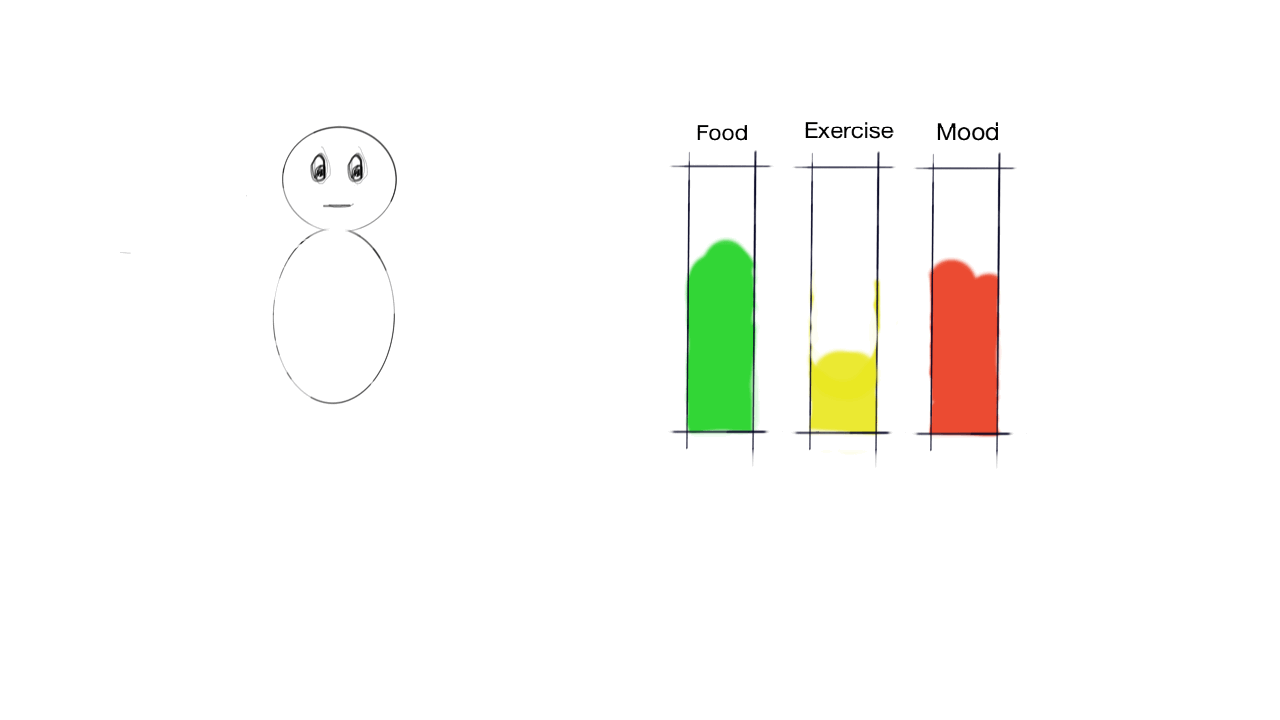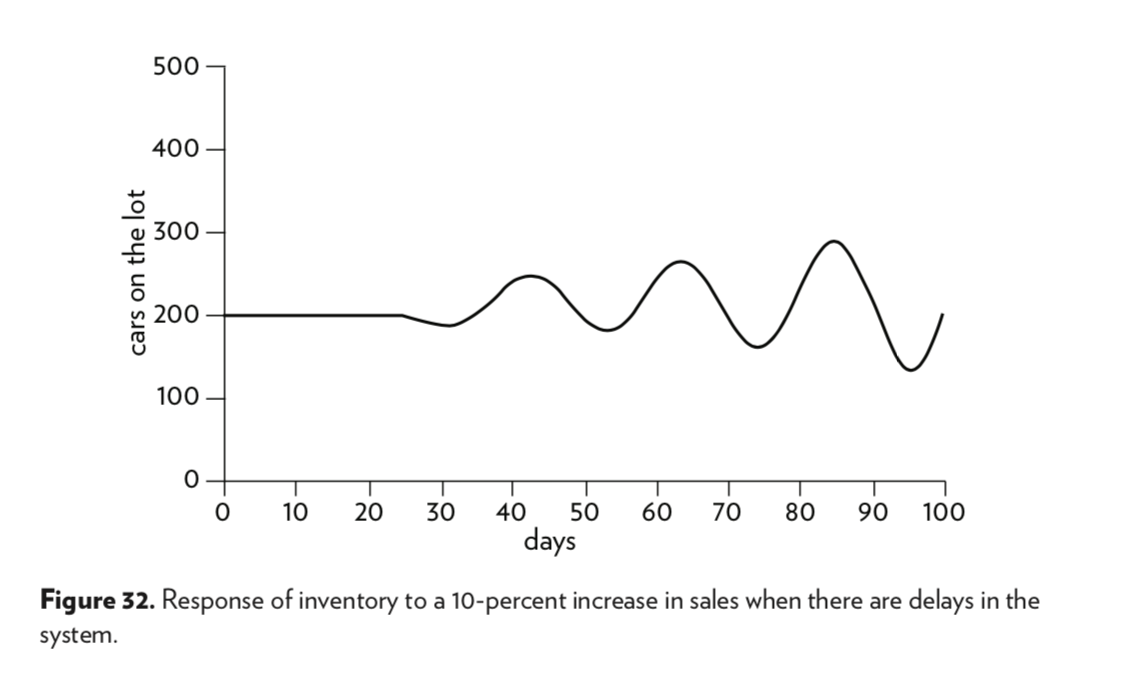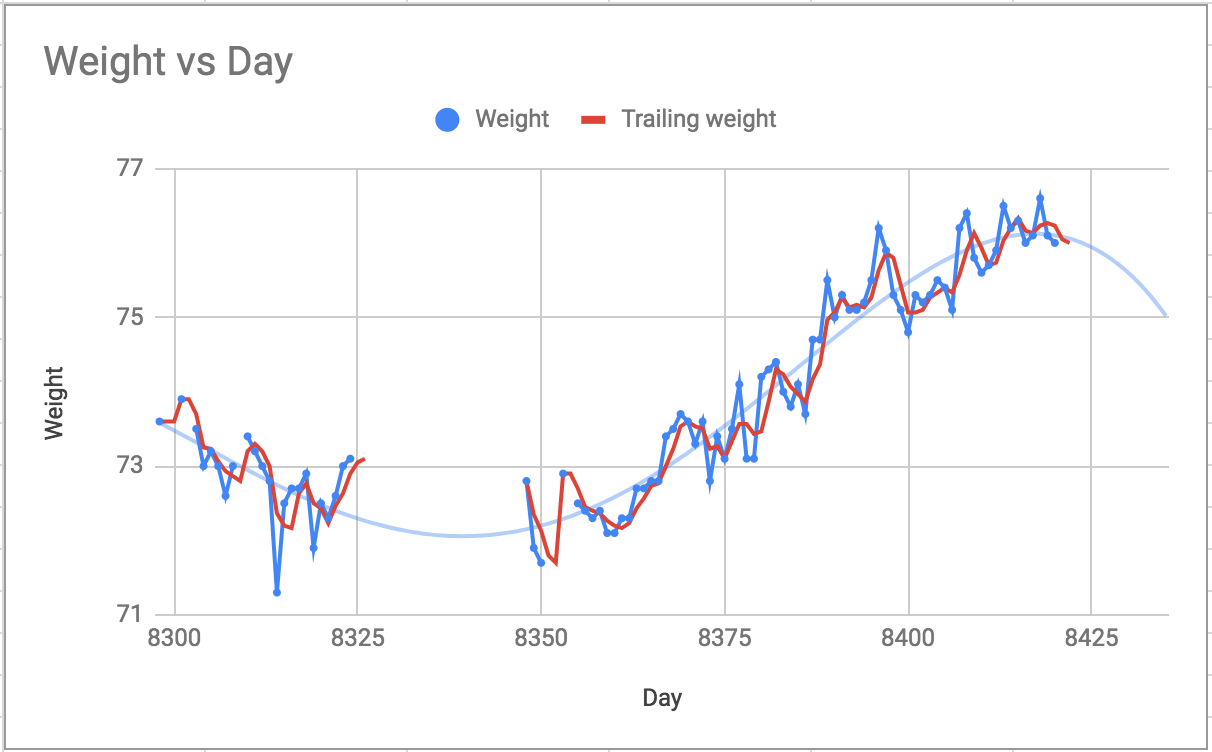How to See Systems
Leveraging feedback loops to solve almost any problem
I was the fat kid. Then puberty hit and I shot up. I started playing basketball, slimming down in the process. Just as my body got used to that, I entered the study-all-day-to-get-into-college phase. Mixed with comfort feeding, I was back to my chubby self.
How does my body work? Why? Is it as simple as eating less and exercising more?
Turns out, it isn’t. But this question introduced me to Systems Theory. Practical processes I could apply to my body to understand fat-ness. The best part? The ideas apply to so much more than this single human body.
 (I’m at my 2-pack self now)
(I’m at my 2-pack self now)

What’s a system, anyway? It’s a collection of parts working together. That’s rather broad: it includes the earth, the government, the beach and us.
What’s not a system, then? Anything that’s a part standing alone. This includes: A screw, a grain of sand, an atom — depending on the resolution you’re looking at. We can argue, that a screw is a system as well, since it’s a collection of atoms working together, staying in the correct shape to make a screw.
Since almost everything is a system, we can leverage concepts from System Theory to solve almost any problem.

Let’s descend into systems. Here’s what caught my attention — feedback loops.
Feedback is a mechanism to send information back to the system. The feedback affects the system. If A causes B, it becomes possible that B causes A too.
A great example of a feedback loop is the Winner take all effect.
You begin the year with a product that is 1% better than your competitors. So, you gain 1% more customers than your competitors. You win this year.
The feedback is more customers, which equals a greater revenue. With the greater revenue, you have more resources to improve your product.
The next year, thanks to extra resources, your product becomes 2% better than your competitors. So, you gain 2% more customers. You win again.
The feedback is a lot more revenue to further improve your product. Soon, your competitor goes bankrupt trying to keep up, and you, the winner, takes all the market share.
Greater revenue can create a better product, as much as a better product can create greater revenue.
What if you could see these feedback loops and use them to solve problems? Welcome to the world of Systems Thinking.
If A causes B, it becomes possible that B causes A too.
First off — the building blocks. There are only two. Together, they make up every system imaginable.
Balancing Feedback Loops
They attempt to bring a system to an equilibrium state. They provide negative feedback, and hence, also known as negative feedback loops.
This has nothing to do with the loops themselves being good or bad.
Reinforcing Feedback Loops
They attempt to exponentiate a system. They provide positive feedback, and hence, also known as positive feedback loops.
Every system which can multiply itself has potential for creating a reinforcing loop.
The Winner take all effect is a reinforcing loop in the business world system.

That is all there is to systems. What then makes even Mark cry when dealing with self-created systems?
 (Getty Images / Chip Somodevilla)
(Getty Images / Chip Somodevilla)
Consider Facebook. You have an algorithm which decides what shows up in the feed. If it’s something people love, people will stick to Facebook and tell their friends about how awesome facebook is. A reinforcing loop. This leads to more time spent on Facebook, hence more revenue for Facebook. A better earnings quarter gives more confidence to shareholders, driving the stock price up — another reinforcing loop. With the stock market, there is a fear of crashing down — a balancing loop, moderating investment.
A better share price, higher revenue attracts more tech talent to Facebook. And that results in … a better feed algorithm. The ultimate reinforcing loop. Would be all rainbows and butterflies if the story ended here, right? The flip side, is that the loop works both ways — make a mistake with the algorithm, or sell data to a third party which the world finds out about, and people start distrusting Facebook, people start deleting Facebook, acquired start up founders start leaving Facebook, which drives down revenue, which drives down share price and drives down hiring. And that results in … a worse feed. Thus, the reinforcing loop continues.

What makes learning about systems worthwhile is this key insight by Donella Meadows in Thinking in Systems:
Systems with similar feedback structure produce similar dynamic behaviours
The determinant of a system’s behaviour is its function or purpose. As Charlie Munger would put it —
Show me the incentives, and I’ll show you the outcomes
Here’s a framework of systems. For a more complete introduction, check out Thinking in Systems. I can’t recommend this book enough!
The competing loops
In every case, we have two or more loops pulling our system in different directions, towards different goals.
Both balancing and reinforcing loops are goal-seeking. The difference is the type of goal. Both have goals in opposite directions, hence the competition.
At any point, the system is moving towards one goal, or is in equilibrium. The loop moving the entire system to its goal is the dominant loop.
Given enough time, the dominant loop keeps changing. This concept of changing loops is shifting dominance.
With the definitions out of the way, we can get into the interesting parts — actually exploring a system!
The Population cycle

Time for a thought experiment. How does population work?
What can you see affecting the size of the population?
Births and deaths.
More births leads to a higher population — which leads to even more births! A reinforcing loop.
More deaths lead to a smaller population — which leads to a smaller number of deaths! A balancing loop.
Together, they form the population cycle.
If the population is moving up, births are the dominant loop.
If the population is moving down, deaths are the dominant loop.
If the population is constant, the system is in equilibrium.
The Investment cycle
The legendary Ray Dalio explains how the economic machine works.
Can you see the loops involved?
Shifting dominance
The loop that’s dominant now, might not be dominant always.
It leads to complexities, since now you’re trying to understand the trend of the system. In money markets, it’s all about the loop dominance — is the market going up or down? When will the dominance change? When moon, when lambo?
Who is in control of the system? The better you understand the system, the better you can answer that. The better you know how the system behaves over time, the better off you’ll be.
Delays
What happens when the feedback is delayed?
Another thought experiment. Imagine you’re a car sales manager. You order new cars every week based on how many cars you need to make 30 total every week. That’s your balancing feedback loop.
You start with a 30 cars. Sell 20 the first week, order 20. Sell 5 the next week, order 5. Sell 15 the next week, order 15. You end up with 30 every week, your expected stock. All’s good.
Things don’t work that way in real life though. There’s a delay between when you order and when the cars come to you. Let’s say it takes a week for the cars to come to you. What happens then?
You start with 30 cars. Sell 20 the first week, order 20. Total cars at 10. Sell 5 the next week, order 25, since you only have 5 cars left. Your 20 order shipment comes in, total at 25. You sell 15, total goes down to 10 and you order 20. The next week, your shipment comes in for the 25 cars. Now you have 35 cars.
See the pattern? It’s an oscillation.
 (Image from Donella Meadows — Thinking in Systems)
(Image from Donella Meadows — Thinking in Systems)
Does this help you see the systems now? Everything is a system.
Do you get frustrated with fixing the hot-cold level in the bath? That’s a system with delays. You’ve got to wait for the water to get from the geyser to the shower head before making the next decision.
Coming back to the system where it all began for me,
The weight loss system.
Your inputs to the system, the body, is what you eat and what you don’t eat.
The output is poop and sweat. Since that’s hard to measure, we use a proxy, the weight of the body as a metric for healthiness. I’ve been tracking my weight everyday for the past few months.
 (The numbers for days: day since birth)
(The numbers for days: day since birth)
There are three ways I’m establishing root cause —
- Thought experiments
- Medical research
- Real world experiments
The in-depth analysis, working through this feedback loop, how to understand a complex system, I’ll leave for another post.
I’m still figuring things out with my body — over the past year, I got a 4 pack, changed countries, went back to a family pack, and now, with a homely 2 pack — I think weight isn’t the best metric to judge health.

To end, here’s something to think about, linking feedback loops and the 80/20 principle, by Richard Koch.
In the absence of feedback loops, the natural distribution of phenomena would be 50/50–inputs of a given frequency would lead to commensurate results. It is only because of positive and negative feedback loops that causes do not have equal results. Yet it also seems to be true that powerful positive feedback loops only affect a small minority of the inputs.
This writing runs on feedback loops.
Our society runs on feedback loops.
Our government, the policies run on feedback loops.
Nature runs on feedback loops.
We run on feedback loops.
Makes sense, right? Since everything is a system.

Every month I choose a new mental model to explore. Every month, I create a new article encompassing all I learnt and the resources I used. I use this as my ultimate guide to mastering mental models. You can too. Here’s the rest:
A Simplistic explanation to Mental Models
*All book links are affiliate links.
You might also like
- Second Order Thinking - A Practical Guide
- How To Understand Systems
- The Human Log
- How the medium earning algorithm works
